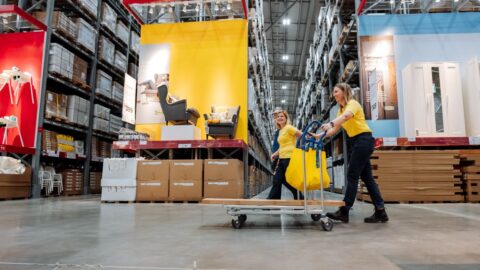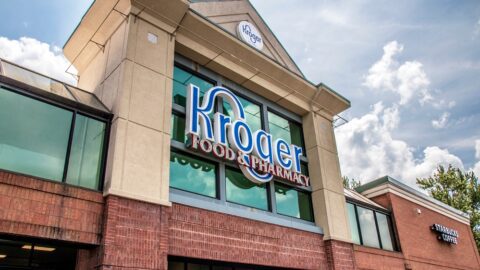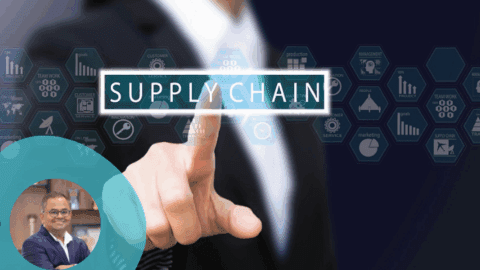As more traditional retailers struggle to literally keep their doors open, innovative leaders are rethinking the approach to the customer experience. Just selling products may not be enough to sustain a brand. In fact, some experts now consider “experience” as the new retail product.
In an exclusive Q&A with Retail TouchPoints, Melissa Gonzalez, CEO and Founder of The Lion’esque Group and Retail Innovator Award winner, shares her insights on how retailers can succeed by rethinking the concept of experience. She discusses:
-
The future of smart technology and its integration in retail experiences;
-
Why Wall Street needs to evolve to foster innovation within retail; and
-
How brands must apply data analysis as they pivot omnichannel strategies.
RTP: How are retailers succeeding by focusing on experience-first?
Gonzalez: Both the Samsung and Sonos stores in New York City are highly engaging environments that really immerse their shoppers into their products.
With retailers such as West Elm, Restoration Hardware and Parachute all opening hotels, they have the mindset that it’s about living in the brand, and they are all understanding that the store format itself is changing.
Experience is your product too, it’s not just the physical object. Not to be cliché, but people always remember the way you make them feel. At the end of the day, what’s going to get me out of my house or my car to see you in a physical environment, since I can buy from you anywhere.
Technology has made us evolve to expect other things — and retail is catching up to it — but it’s also caused this shift in craving opportunities to interact in a physical way. When I go to a store, I don’t just need to be in a distribution center; I want to discover something. I want to say “that’s cool” and post it on my socials. I want to meet the designer behind the brand, or have an afternoon with my friends.
The mindset is different so what we deliver has to be different.
RTP: Given your background on Wall Street, how can retailers and investors get on the same page in measuring a brand’s success?
Gonzalez: The metrics for Wall Street are pretty straight forward. It’s “what’s the bottom line?” What are your gross margins and your earnings per share and how much am I going to make? That’s just how it works. VCs just say, “We’re going to give you money, and you need to grow as fast as you can.” Then those companies go public, and they’ve had amazing growth stories, but then we dig into the numbers.
In today’s changing market, I think there’s a shift in how ROI is achieved. An investment for me to go in-store is going to be different across the country. Some destinations might serve well just as distribution centers where the formula is constant — traffic grows, sales grow, profit grows.
But we need to account for the fact that there will be investments to be made in experience centers. Those might not have inventory, they might be completely architected out with technology instead, and they might be about learning and customer discovery. The ROI we see from that store isn’t its in-store sales, it’s the attribution across all channels of sales growth because of what this in-store experience delivered.
We need a concrete way to track that so we can say, “Yeah, we grew all these stores and we had all this capital investment. Here’s the list we saw across channels because of locations A, B and C.”
We’ve talked to brands, and how much stores are going to make depends on how you attribute sales. Because of technology, and the opportunity for endless aisle, same-day delivery and not needing to have inventory, I think if you properly attribute the sales lift across channels, the ROI per square foot is higher because you need a smaller store now, and the level of engagement can be even higher within a smaller footprint.
You’ll see that lift across channels because of what took place in the store, but it takes a shift to happen and a lot of these digital native companies such as Bonobos and MM.LaFleur are coming to brick-and-mortar with that mindset.
RTP: How is data gathering/analysis going to be a fit going forward, especially as companies rethink their omnichannel strategies?
Gonzalez: Every opportunity is one where you can learn more. It’s how long are they holding a product, or what are they taking to the dressing room, but not buying? What are they never touching? What do they do as soon as they walk into the store? Are there pockets where they spend the most time, or areas they don’t ever go to?
You’re seeing brands like Target build Open House. There were things about it that worked, things about it that didn’t. They learned from that because it was such an engaging environment, and they just reopened it after structuring it a bit differently based on what they learned from consumers.
They’re also learning about consumers’ appetite for IoT, so they have this huge interactive focus group of people coming in and engaging with 70 different products, and they’re also getting to see what bets they want to make for all Target stores based on what they’re learning in their Open House.
It’s just so much smarter for brands to do this, because they’re developing closer relationships with consumers that are discovering their products and experiences. Brands are learning from Target how they can better serve their customer, and Target is learning what works before they put investment dollars behind buying inventory.
RTP: What advice do you have for brands that are looking to thrive in the modern retail environment?
Gonzalez: You just really have to think about what you’re trying to learn, what you need to offer in order to best educate the customer. We did J. Hilburn’s pop-up stores and they were able to increase their cart size because their customer didn’t have as much confidence on mixing and matching patterns online. But in-store, the shopper saw the possibility of it, and it made them more confident to convert to purchase.
They didn’t need a whole store of inventory of all those ties and shirts. They just had to show what’s possible, but they understand their consumer.
At the end of the day, you always have to start with those conversations to ask: What are we trying to deliver? What does our customer want? What’s the pain point we can answer in this physical space in an engaging way? That can happen no matter how large or small your company is.
The bigger companies might be able to invest in RFID, AI and other technologies, but your salespeople always have opportunities to learn regardless how big the store is. If you don’t have the budget for technology, invest time in your salespeople.
RTP: How did you get into retail? Specifically the pop-up side of things?
Gonzalez: I used to work on Wall Street, and used to host a show as a VJ, so there was always that push and pull — naturally good in business, but really interested in the creative world. When I left Wall Street in 2009, I stumbled upon an opportunity where someone invited me to experiment with their store space, and we launched our first pop-up from there.
Serendipitously, I found a spot where I was able to bring creative and business together and build from that, and the environment just continued to evolve. I’ve always been interested in technology and learning about new companies and investing in them back from my days when I worked on Wall Street.
RTP: Who were your mentors and inspirations within retail?
Gonzalez: Apple’s approach is so smart, because they really understand the kind of environment retail is. They develop products that change behavior in a positive way. I think of what Ron Johnson did with the company when the stores first launched, and what Steve Jobs and his team accomplished. I look at my daughter who picks up my phone and intuitively knows what to do, but I also think of the efficiency it has added to my life.
We happen to be partners with Shopify, and the mindsets toward the ecosystem they developed has made a big impression on me. They have brilliant developers and coders coming out and creating this ecosystem of support for entrepreneurs that want to build e-Commerce sites. You surround yourself with intelligent people, and everyone can foster more creative ideas.













